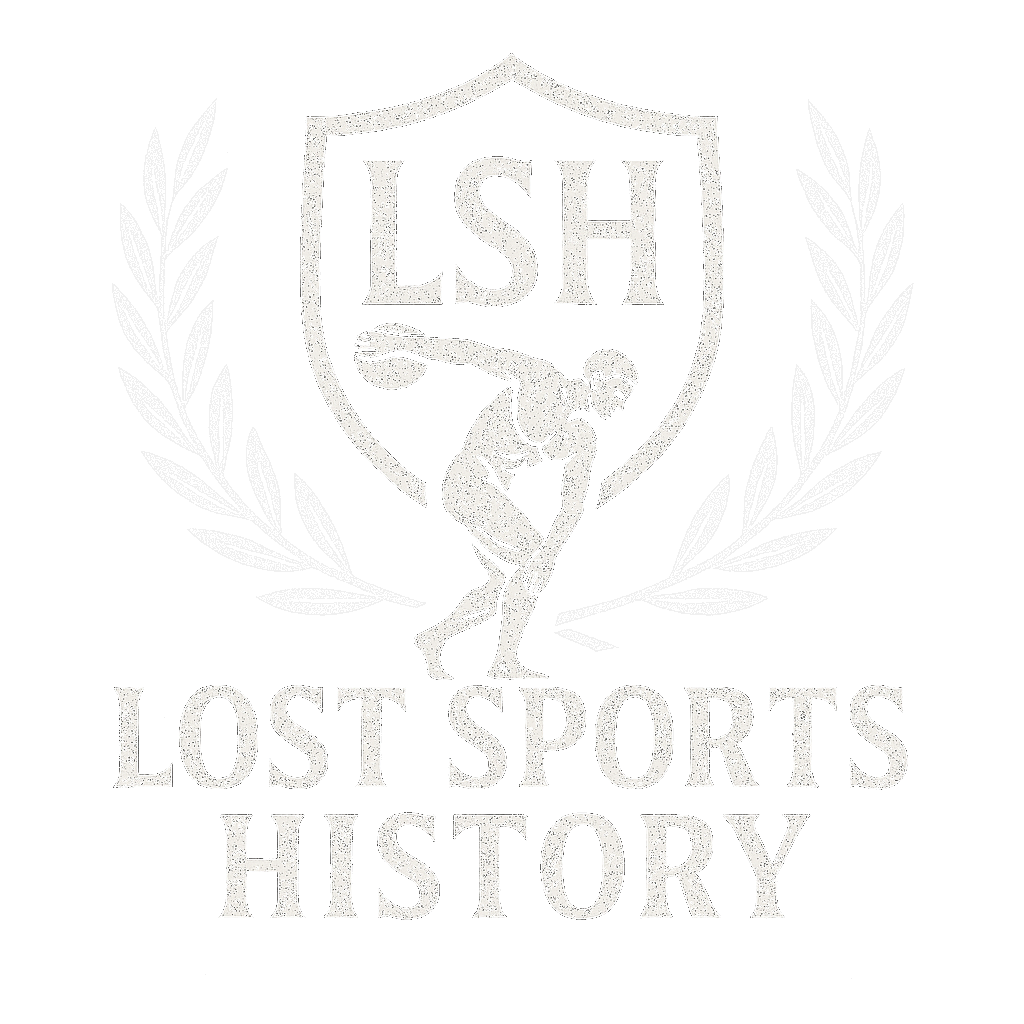Now Reading: Lost Sports of the Ancient World: Games That Time Forgot
-
01
Lost Sports of the Ancient World: Games That Time Forgot

Lost Sports of the Ancient World: Games That Time Forgot
History’s pages reveal fascinating tales of ancient sports that once captivated audiences but have since vanished into the mists of time. From the brutal combat arenas of Greece to the grand spectacles of Rome, these forgotten games paint a vivid picture of past civilizations and their values.
The preservation of these lost athletic traditions serves as a window into our ancestors’ daily lives, beliefs, and social structures. Each sport carried deep cultural significance – some prepared warriors for battle, others honored the gods, while many fostered community bonds and social hierarchies.
Our journey through these forgotten ancient sports uncovers remarkable athletic practices that shaped societies:
- Combat sports that tested warriors’ mettle
- Racing events that drew thousands of spectators
- Strength competitions that determined social status
- Team games that united communities
As we explore these lost games, we’ll discover their origins, understand their complex rules, and unravel the fascinating reasons behind their eventual decline. These forgotten contests remind us how athletic traditions evolve, reflecting changing societal values and needs across centuries.
Learn more about ancient Olympic sports
1. The Cultural Significance of Ancient Sports
Ancient sports were more than just games; they reflected the values and ideals of different cultures. These athletic traditions had a profound impact on society, shaping social structures and community dynamics in ways that went beyond physical competition.
The Role of Ancient Sports in Shaping Society
The practice of Ancient Sports created distinct social hierarchies, with successful athletes often elevated to near-divine status. In Ancient Greece, Olympic victors received:
- Free meals for life
- Honorary statues in their hometown
- Special seats at public events
- Tax exemptions and political privileges
Religious beliefs and mythological stories played crucial roles in shaping these athletic traditions. Many Ancient Sports emerged from sacred rituals and ceremonies honoring gods. The Ancient Olympic Games, for example, celebrated Zeus through athletic excellence, while Aztec ballgames represented cosmic battles between day and night.
How Different Cultures Used Sports to Reinforce Their Values
Different cultures developed unique sporting practices that reinforced their core values:
- Sparta: Combat sports emphasized military prowess
- Rome: Gladiatorial contests displayed power and dominance
- Maya: Ball games demonstrated divine favor
- Egypt: Wrestling symbolized the struggle between order and chaos
These Forgotten Ancient Games fostered community bonds through shared experiences. Public sporting events united people across social classes, creating collective memories and strengthening cultural identity. Athletes embodied their society’s highest virtues – courage, honor, discipline – inspiring generations to uphold these values.
The Evidence of Ancient Sports’ Importance
The archaeological evidence of these Historical Sports Practices reveals sophisticated training facilities, specialized equipment, and dedicated venues that underscore their central role in ancient life. These physical remnants tell stories of societies that valued athletic achievement as a path to both earthly glory and divine favor.
2. Pankration: The Brutal Combat Sport of Ancient Greece
Pankration emerged in ancient Greece as one of the most feared and respected combat sports. This intense martial art form combined wrestling and boxing techniques, making its debut in the 33rd Olympiad of 648 BCE.
Greek mythology attributes the creation of pankration to legendary heroes Hercules and Theseus. The sport’s name derives from the Greek words “pan” (all) and “kratos” (power), literally meaning “all powers.”
Rules and Techniques:
- Almost everything permitted except biting and eye-gouging
- Strikes with fists, feet, elbows, and knees
- Submission holds, joint locks, and chokes
- Ground fighting allowed
- Matches ended only by submission or death
Training for pankration required exceptional physical conditioning. Athletes practiced in specialized wrestling schools called palaestrae, developing strength, agility, and combat techniques under experienced trainers known as paidotribai.
The sport’s brutality reached legendary status. Ancient records tell of fighters like Arrichion of Phigalia, who won his final match despite dying from a chokehold – his opponent submitted seconds before realizing Arrichion had passed.
Pankration’s decline began with the Roman Empire‘s rise. The Romans preferred gladiatorial spectacles, shifting public interest away from Greek athletic traditions. The sport’s final blow came in 393 CE when Emperor Theodosius I banned the Olympic Games, marking the end of official pankration competitions.
Modern martial arts like Mixed Martial Arts (MMA) share striking similarities with this ancient Greek combat sport, suggesting its enduring influence on combat sports evolution.
3. Chariot Racing: A Thrilling Spectacle in Ancient Rome
Chariot racing was the most popular form of entertainment in ancient Rome, attracting larger audiences than any modern sporting event. The Circus Maximus, Rome’s biggest stadium, could accommodate up to 250,000 spectators – about a quarter of the city’s population.
Teams and Charioteers
The races featured teams distinguished by their colors: Blue, Green, Red, and White. Each team maintained vast stables of horses and employed thousands of support staff. Professional charioteers achieved celebrity status, with successful drivers like Gaius Appuleius Diocles amassing fortunes equivalent to millions in today’s currency.
The Races
A typical race consisted of seven laps around the circus, with drivers skillfully maneuvering their horse-drawn chariots through tight turns while avoiding collisions. The most dangerous point was the meta – a turning post where chariots often crashed in spectacular fashion.
Cultural Impact
The sport’s influence extended beyond entertainment:
- Political factions aligned themselves with racing teams
- Gambling on races drove the Roman economy
- Religious ceremonies preceded each racing event
- Victory monuments celebrated successful charioteers
Decline of Chariot Racing
The decline of chariot racing paralleled Rome’s fall. The expensive maintenance of venues, the cost of breeding horses, and the disruption of trade routes made sustaining the sport impossible. The last recorded race in the Circus Maximus took place in 549 CE, marking the end of an era that had captivated Roman society for nearly a millennium.
4. The Stadion Race: The Fastest Feet in Antiquity
The stadion race is the most important event in ancient athletic competition. It was the only event in the first 13 Olympic Games. This short-distance sprint covered about 192 meters, which is roughly the length of the stadium itself. It showcased an incredible display of speed and athletic skill.

How Athletes Competed
Ancient Greek athletes competed without clothes, with their bodies covered in oil, running on tracks made of packed earth. The race was an opportunity for city-states to proudly present their best athletes, and the winners became legends in their communities. One notable champion, Leonidas of Rhodes, achieved remarkable success by winning twelve consecutive races between 164-152 BCE.
Key Features of the Stadion Race
The stadion race had some unique characteristics:
- Starting mechanisms called hysplex – bronze gates that ensured fair starts
- Stone starting blocks carved into the track
- Judges positioned at both ends to monitor false starts and determine winners
Evolution of the Olympic Games
As the Olympic Games grew to include new events like the diaulos (double-stadion) and dolichos (long-distance race), the stadion race remained highly respected. Its standardization across Greek territories played a significant role in establishing consistent measurements for athletics, with the term “stadium” originating from this foundational event.

Impact Beyond Athletics
The influence of this sport extended beyond just athletics. Cities began measuring distances using “stadia,” which had a lasting effect on ancient Greek architecture and urban planning. Archaeological findings from places like Delphi reveal intricate designs of tracks specifically constructed for these explosive sprints.
5. Rope Climbing: A Test of Strength and Agility
Rope climbing is one of the oldest tests of human physical ability. It originated from military training exercises, where soldiers had to climb walls and navigate difficult landscapes.
The Competitive Version
In the competitive version of rope climbing, athletes had to climb a thick rope hanging from a height of 8 meters (25 feet). They showcased incredible upper body strength, grip endurance, and precise technique. To succeed in rope climbing, athletes needed:
- Core stability – being able to maintain their body position while climbing
- Grip strength – having strong control over their hands on the rope
- Technical mastery – moving efficiently with a smooth climbing rhythm
- Mental focus – overcoming challenges posed by heights and fatigue
Rope Climbing in the Olympics
Rope climbing gained recognition when it was included in the 1896 Olympics and remained a part of gymnastics competitions until 1932. Athletes like Georges Miez and Alfred Flatow excelled in this discipline, setting impressive speed records.
Reasons for Decline
Several factors contributed to the decline of rope climbing as a competitive sport:
- Inconsistent participation from countries around the world
- Difficulties in standardizing scoring methods
- Requirements for specific venue heights
- Safety concerns regarding falls during climbs
The Legacy of Rope Climbing
Although rope climbing is no longer an Olympic event, its legacy lives on in various ways:
- Military Training: Rope climbing remains an integral part of training programs for armed forces around the world. It helps soldiers develop functional strength, agility, and problem-solving skills required in combat situations.
- Modern Fitness Challenges: Many fitness enthusiasts incorporate rope climbing into their workout routines or participate in obstacle course races that feature this activity. It serves as a benchmark for assessing overall fitness levels and functional capabilities.
Rope climbing continues to be valued as a measure of physical prowess, showcasing the enduring importance of strength and agility across different domains.
6. Tug of War: Teamwork at Its Peak (And Decline)
Tug of war is a perfect example of combining raw human strength with strategic teamwork. This ancient sport was part of the Olympics from 1900 to 1920, where teams of eight athletes competed by pulling a rope in opposite directions. The International Olympic Committee archives contain records of unforgettable matches that held national pride at stake.
The Demands of Tug of War
The sport required precise coordination among team members:
- Teams positioned themselves alternately for the best grip
- A center mark on the rope determined victory points
- Athletes employed specialized footwork and pulling techniques
- Matches continued until one team successfully pulled the other across a designated distance
During its time in the Olympics, tug of war showcased incredible displays of collective power. Great Britain was particularly successful, winning multiple gold medals through their police and city club teams. The 1908 London Olympics witnessed an intense competition where the Liverpool Police team emerged as champions.
Challenges Faced by Tug of War
Despite its popularity, the sport encountered several challenges:
- Standardization Issues: Different rules being followed in various countries
- Equipment Disputes: Arguments over acceptable footwear and rope specifications
- Professionalism Questions: Concerns regarding the amateur status of competitors
The removal of tug of war from the Olympics reflected shifting views towards specialized athletic events. Today, modern tug of war associations work towards preserving this ancient test of team strength by organizing international competitions that respect its historical importance while also adapting to present-day sporting standards.
7. Hoplitodromos: Racing in Armor for Glory (and Survival)
The hoplitodromos stands as one of the most practical ancient sports ever devised – a grueling race where athletes sprinted while wearing full military armor. This unique competition emerged from the battlefields of ancient Greece, where swift movement under heavy equipment meant the difference between life and death.
The Gear
Competitors donned authentic battle gear weighing up to 50 pounds, including:
- Bronze helmet (kranos)
- Shield (aspis)
- Greaves for leg protection (knimides)
- Breastplate (thorax)
The Race
The race typically covered two lengths of the stadium track – approximately 384 meters – while carrying this substantial weight. Athletes needed to master both explosive speed and sustained endurance to excel in this demanding event.
Military Training
Beyond pure athletic achievement, the hoplitodromos served as crucial military training. Young soldiers learned to:
- Move efficiently under heavy armor
- Maintain formation during battle charges
- Build stamina for extended combat
Decline of the Sport
The sport’s decline paralleled significant changes in ancient warfare. As battle tactics evolved beyond traditional hoplite warfare, the practical applications of the hoplitodromos diminished. The rise of cavalry warfare and specialized military units reduced the need for heavily armored foot soldiers, gradually rendering this once-vital training obsolete.
Modern Legacy
The legacy of this military armor race lives on through modern military fitness tests and obstacle course competitions, though none quite capture the raw intensity of racing in authentic bronze armor under the Mediterranean sun.
8. Cestus: Boxing with a Deadly Twist (and Safety Concerns)
The ancient sport of cestus represented one of the most brutal forms of combat in antiquity. Unlike modern boxing gloves designed for protection, the cestus was crafted for maximum damage – featuring leather straps embedded with metal studs, spikes, or sharp edges wrapped around fighters’ hands.
Matches often resulted in devastating injuries:
- Facial fractures
- Severe concussions
- Broken bones
- Permanent disfigurement
- Fatal injuries
The design of the cestus transformed boxing matches into bloody spectacles. Fighters wrapped their hands in layers of leather strips, creating a weapon-like apparatus. Metal components were strategically placed across knuckles and striking surfaces, turning every punch into a potentially lethal blow.
Archaeological evidence from ancient Roman artifacts reveals the evolution of cestus designs, with some variations including:
- Bronze plates
- Iron studs
- Bladed edges
- Reinforced striking surfaces
The brutal nature of cestus boxing reflected the Roman appetite for violent entertainment. Matches rarely lasted long – fighters either achieved quick knockouts or sustained career-ending injuries. This raw intensity drew massive crowds to amphitheaters, yet the sport’s extreme danger led to its eventual decline.
Ancient boxing techniques underwent significant changes as civilizations evolved, with safer forms of combat sports emerging. The cestus represents a stark reminder of how ancient sports often prioritized spectacle over athlete safety.
The development of modern boxing, with its padded gloves and strict regulations, stands in sharp contrast to its ancient predecessor. This evolution highlights humanity’s shift toward protecting athletes while maintaining the strategic elements of combat sports.
9. Jeu de Paume: From Indoor Racket Sport to Lawn Tennis (And Its Evolution)
Jeu de paume, an ancient sport dating back to 12th century France, is the direct ancestor of modern tennis. This sophisticated indoor game earned the nickname “the game of kings” due to its popularity among European nobility, particularly in France and England.
How Jeu de Paume Was Played
Players struck a ball with their bare hands against a wall or over a net in specially designed indoor courts. These courts featured complex architectural elements:
- Sloping roofs (penthouses)
- Netted windows (dedans)
- Angled walls for strategic rebounds
The Evolution of Equipment
The evolution of equipment transformed the sport dramatically. Early players protected their hands with leather gloves, later advancing to wooden paddles called paumiers. This progression laid the groundwork for modern tennis rackets.
The Role of Social Hierarchies
Real Tennis, as it became known in England, maintained strict social hierarchies. The indoor courts served as exclusive gathering spaces for aristocrats, creating a distinct cultural environment that shaped the sport’s development.
The Shift to Outdoor Play
The transition to outdoor play marked a significant shift in the sport’s history. The invention of vulcanized rubber in the 1850s enabled the creation of bouncy balls suitable for grass courts. This innovation, combined with Major Walter Clopton Wingfield’s standardization of lawn tennis rules in 1874, sparked the transformation into the modern game.
The Decline of Jeu de Paume
The architectural complexity of jeu de paume courts, coupled with the rise of more accessible outdoor tennis, gradually pushed this ancient sport into obscurity. Today, only a handful of traditional courts remain active, preserving this fascinating chapter in sports history.
10. Skijoring: Horses Meet Skis (And Why It Didn’t Stick Around Long-Term)
Skijoring emerged as a thrilling winter sport that combined the grace of skiing with the raw power of horses. This unique athletic endeavor saw skiers being pulled across snowy terrain by horses at breathtaking speeds, creating an exhilarating spectacle for both participants and spectators.
The sport’s origins trace back to Scandinavia, where it served as a practical means of winter transportation before evolving into a competitive event. During the 1928 Winter Olympics in St. Moritz, skijoring made its debut as a demonstration sport, showcasing its potential on the international stage.
Key Elements of Skijoring:
- Skilled horsemanship combined with expert skiing ability
- Specialized equipment including tow ropes and harnesses
- Complex coordination between rider and horse
- Speeds reaching up to 40 miles per hour
Despite its initial promise, skijoring faced significant challenges:
- Limited geographical appeal due to specific weather requirements
- High costs associated with maintaining both skiing and equestrian equipment
- Safety concerns for both athletes and animals
- Lack of standardized rules and regulations
The sport’s decline can be attributed to the rise of modern skiing facilities and the growing popularity of mechanized winter sports. Today, skijoring exists primarily as a regional curiosity, practiced in select locations where enthusiasts keep this unique blend of equestrian skill and winter athletics alive.


















